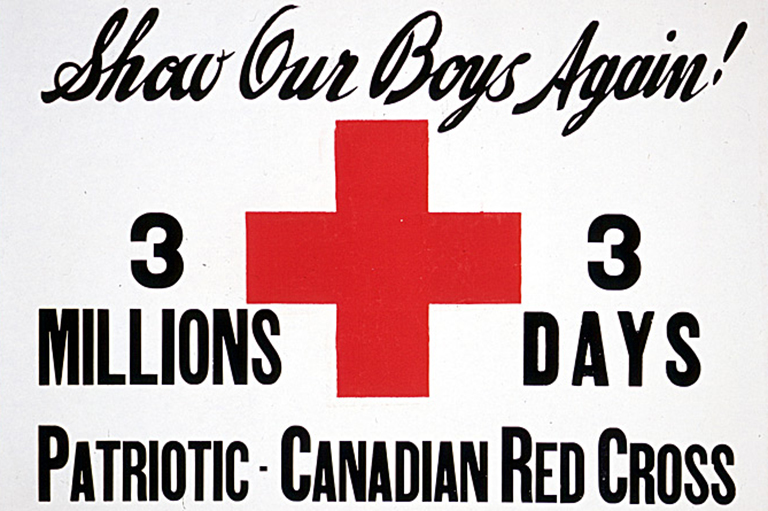‘Bomb Girls’: Defense Industries Limited and the Home Front
Grade Levels: 5/6, 7/8
Subject Area: Social Studies/History
This lesson is inspired by the article “Home Front” in the April 2020 issue of Kayak: Canada’s History Magazine for Kids.
Lesson Overview (Summary):
This lesson examines the contributions of women working at Defence Industries Limited (DIL). Students will be asked to collect data about the role, impact and experiences of the women known as the ‘Bomb Girls’. Students will use the historical thinking concepts of cause and consequence and historical significance to explore the ways women contributed to help the war effort.
Time Required
2 lessons
Historical Thinking Concepts
- Establish historical significance
- Use primary and secondary source evidence
- Identify continuity and change
- Analyze cause and consequence
Learning Outcomes
Student will:
- Use the inquiry process to learn about the impact and contributions of the ‘Bomb Girls’ working at Defence Industries Limited (DIL) in Ajax
- Analyze: use documents, images, interviews to gather data about the historical experiences of the ‘Bomb Girls’ and their workplace environment at Defence Industries Limited
- Communicate and apply the knowledge by sharing their findings with the class
- Consolidate their learning by completing an assessment piece that responds to the inquiry question for the lesson
Background Information
Defence Industries Limited
Defence Industries Limited (DIL) was a subsidiary of Canadian Industries Limited (C-I-L), founded in 1939 to manufacture munitions for use in World War II. In February 1941, army surveyors first visited the vast open fields of Pickering, Ontario in the hopes of constructing Canada’s largest ammunition shell-filling plant. In 1941, this farmland became the site of Defence Industries Limited Pickering Works (DIL).
Its main purpose was to build shells with explosives, have them crated, transported by rail and finally shipped to England. It was considered one of the largest wartime factories in Canada and the British Empire.
The factory (DIL) was a vast shell filling plant which by 1945 had: filled 40 million shells; produced pellets, detonators and other desperately needed war munitions; employed over 9,000 people including women from across Canada. The (DIL) munitions factory at peak production; boasted its own water and sewage treatment plants; a school population of over 600; 30 miles of railroad and 30 miles of roads. The entire plant site included some 2,985 acres.
Women came from all over Canada to work at (D.I.L) and were called ‘Bomb Girls’. They came from Nova Scotia to Alberta due to tough competition for jobs in smaller munition plants in their home provinces. Applying for jobs meant that they could work outside their homes and earn wages, learn new skills and start a career.
These women were working in high-security, dangerous conditions making bombs for the war effort. They worked six-day weeks at lower wages than the men who did comparable work. It was dangerous and demanding work, but the company ensured excellent working conditions for its employees.
There were 600 wartime homes built as temporary residences close to the plant. A community hall, movie theatre, a convenience store and a post office were built to service the workers. Recreational activities included sports leagues, dances, live bands, and lots of interest groups.
The plant was so large that it was able to run its own newsletter for employees, promoting local events as well as international news. Security was paramount and every effort was made to secure the perimeter by enclosing the plant with an eight-foot tall, barbed wire fence. (DIL) was both a haven of community spirit and security for its residents.
The plant was in operation until its closure in 1945. The women who worked there, credit Defence Industries Limited (DIL) for changing not only their lives but the perception of working women in Canada.
The Lesson Activity
Activating: How will students be prepared for learning?
Explain to students that women were critical in the war effort in many ways. We will focus on the women who were called ‘Bomb Girls’ and their work at Defence Industries Limited in Ajax. Have students view introductory video: Ajax Bomb Girls Special DVD
Ask students to formulate questions with guidance from the teacher in order to identify what the focus of their inquiry should be. Critical thinking question examples: What was the impact and contribution of the women working at Defence Industries Limited? Why did the ‘Bomb Girls’ credit Defence Industries Limited (DIL) for changing not only their lives but the perception of working women in Canada
Acquiring: What strategies facilitate learning for groups and individuals?
The students will begin in groups of four. Students should have a laptop at each station. Each group will be assigned a topic to research and will be given time to explore a variety of historical documents dealing with Defence Industries Limited and the ‘Bomb Girls’.
Each group will be given chart paper to record their findings from primary and secondary sources. The group will interpret and analyze the information and identify the key points that will help answer the critical thinking question.
Research topics:
- Group 1: How Ajax got its name, arriving at Defence Industries Limited
- Group 2: Getting hired at (DIL), employee selection and interviews
- Group 3: Women’s jobs, shifts, shells and morale
- Group 4: Inside the plant, wages and transportation
- Group 5: Living at the plant, wartime homes, buying food and recreation
- Group 6: Security, safety and wages
- Group 7: Closing and getting fired
- Group 8: Legacy and importance of Defence Industries Limited
Applying: How will students demonstrate their understanding?
Ask students in the group to review their findings and prepare a 5-minute presentation of their topic. They will present to the other student groups in the class. Students will have their chart paper as a reference. They are using the Jigsaw cooperative learning strategy that enables each student of a “home” group to specialize in one aspect of a topic and be accountable to teach the other students what they have learned.
Once completed, the students will put the chart paper on their tables and allow their classmates to move as a group to each topic and take notes using a graphic organizer. Two of the four students in the group will stay at the table to clarify and explain their research. Once completed the rotation will continue with the touring group staying at the table to clarify and explain their research.
Students will use the information gathered to complete the assessment. The assessment should respond to the inquiry question for the lesson.
Materials
- Paper
- Markers
- Digital devices
- Chart paper
- Graphic organizer
Resources
Ajax Public Library Digital Archives - Defence Industries Limited Exclusive Rare Footage of Defence Industries Limited
DIL Interviews of Former Defence Industries Limited Employee and Ajax resident, Louise Johnson
Legion: Canada’s Military History Magazine, “The Bomb Girls of Ajax”
Oshawa Museum Blog, “Ajax’s Defence Industry Limited”
Ontario in World War II: Women on the Home Front
Guelph Mercury Tribune, “Former Ajax bomb girl talks about life in Durham during the Second World War Ajax High School”
Assessment
Students will write a letter to the editor or make a public service announcement to commemorate the work and legacy of the ‘Bomb Girls’. Their assessment piece will showcase their knowledge and comprehension of the munitions work these women undertook. The piece should respond to the inquiry question for the lesson.
Extension Activity
Have students create recruitment letters and posters encouraging women to apply for important war work at Defence Industries Limited (DIL).
Themes associated with this article
Advertisement





